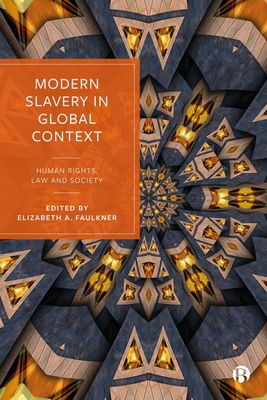In the UK last month, modern slavery made headline news, with Southwark Crown Court jailing several members of an organised criminal gang ‘who trafficked 12 people from Eastern Europe and forced them to work long hours in McDonald’s and in various other roles while stealing their wages’.
According to the Crown Prosecution Service, the perpetrators lured 10 men and two women (selected from poor or rural backgrounds in the Czech Republic and Slovakia) to the UK with promises of well-paid jobs and a better quality of life. The reality was very different, with their wages withheld and passports and identity documents confiscated.
The victims were forced to work in various roles including at a bakery factory, a car wash and a McDonald’s restaurant, in addition to undertaking domestic household tidying and cleaning. A variety of ‘signs’ were missed, including the fact that the victims spoke little or no English (the implied racism of a codified suspicion towards those with low local language ability hints at how ‘modern slavery’ has been caught up in growing ideas of nationalism).
What is modern slavery? What images are conjured in your mind? A quick Google search returns images of people bound by rope or chains, gagged, caged and awaiting rescue. It is upon this stereotypical imagery that the offences of modern slavery have been constructed – as a new and more heinous crime than forced labour.
As a label, modern slavery is a powerful tool, one that appeals to altruistic feelings, while simultaneously providing an umbrella-like term for a variety of exploitative practices. The complexity of the crime of modern slavery is in part a consequence of the adoption of the word slavery – a term which is both morally and politically loaded, carrying specific political and emotional weight particularly in the United States. Its use (albeit rebranded as ‘modern slavery’) has been criticised for both invoking the history and exploiting the memory of transatlantic slavery.
Language is important: constructing modern slavery as a crime assembles the classic actors in this tale – the victim, the villain and the rescuer, the latter often being presented as the state. But is the state not also the villain?
The adoption of the Modern Slavery Act in 2015 was applauded by many and helped to position the UK as a global leader in this field. This matters when the view that modern slavery is an ‘urgent global social problem’ has been readily accepted, and illustrated, for example, by its inclusion within the UN Sustainable Development Goals. Under the Modern Slavery Act, a person commits an offence if they hold someone in slavery or servitude, or require them to perform forced or compulsory labour. The person must also know, or ought to know, that they are doing so. It is for these offences that the members of the criminal gang in the McDonald’s case were convicted. However, a key flaw of the phrasing in the legislation is that it places all the blame at the feet of the perpetrator. Why is this a problem, when the perpetrators are those guilty of offences and, in terms of justice, deserve to be punished?
What this legislative framework does is overlook the exploitative environments that allow such an offence to take place. These environments are, ironically, commonly generated by the government (aka the rescuer), such as banning asylum seekers from working and tying overseas domestic workers to their employers. Since the late 1980s, transnational companies have shifted production to places where labour and inputs are cheapest – often due at least in part to a lack of unionisation in addition to a package of factors around globalisation that have contributed to this. Global capitalist pressures on labour markets and the search for cheaper alternative workers lead to exploitative labour practices.
But the Modern Slavery Act fails to recognise this. Instead, it insists on defining modern slavery as a crime – a relationship solely between the victim and the perpetrator.
It is within this context that the McDonald’s case and others come to the fore. On the verdicts, Deputy Chief Crown Prosecutor Lynette Woodrow asserted that “these verdicts have secured justice for the victims, and this case demonstrates the hidden harm that is caused by labour exploitation”. But has justice really been secured for the victims? It might be that it’s a narrow victory for those directly involved in the case, but is it also part of a broader moral victory for the state? This idea is enshrined in the language of the report of the House of Lords: The Modern Slavery Act 2015: becoming world-leading again. Its title, for me, echoes Trump’s often-repeated tagline. The falsified narrative that the UK is leading the world in the fight against modern slavery is problematic, glossing over the interactions between immigration and exploitation, and ignoring the fact that the UK government is not leading on anything when it comes to anti-trafficking work. The law and policy written to ‘protect’ neglect to consult those with lived experiences on how we can really address labour exploitation.
I would like to thank Dr Ella Cockbain (UCL) and Dr Samantha Currie (Monash University) for their comments upon this piece.
Elizabeth A. Faulkner is Lecturer in Law at Keele University.
 Modern Slavery in Global Context edited by Elizabeth Faulkner is available on the Bristol University Press website. Order here for £29.99.
Modern Slavery in Global Context edited by Elizabeth Faulkner is available on the Bristol University Press website. Order here for £29.99.
Bristol University Press/Policy Press newsletter subscribers receive a 25% discount – sign up here.
Follow Transforming Society so we can let you know when new articles publish.
The views and opinions expressed on this blog site are solely those of the original blog post authors and other contributors. These views and opinions do not necessarily represent those of the Bristol University Press and/or any/all contributors to this site.
Image John Salvino via Unsplash


